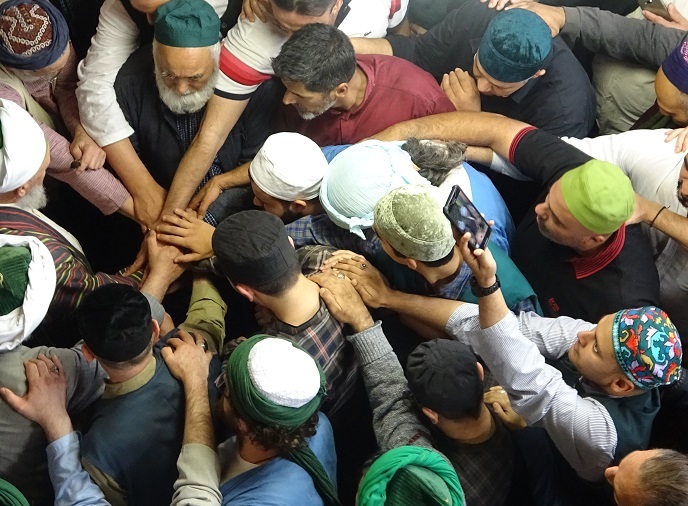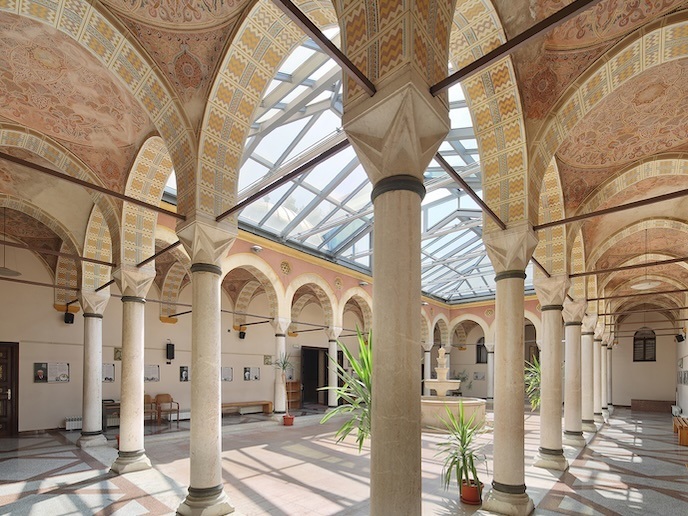Tracing the path of mystical Islam in European territory
Sufism is regarded the inward aspect of Islam, a set of values, doctrines, rituals and institutions that crystallise its mere essence. As a result, Sufi visualisations of belief and piety form a kind of visual lingua franca in the widest sense within European Muslim communities. The EU-funded SufiVisual project included interdisciplinary research focused on how visual culture actively constructs and shapes religious concepts, impacting our understanding of Islam. The project aimed to function as a bridge between East and West, as it explored the roles of visual culture and religious practice as counter movements to religious fundamentalism and driving forces for religious pluralism.
Seeing the Sufi universe from inside
Sara Kuehn, the project’s Marie Skłodowska-Curie fellow, carried out fieldwork at the Sufi communities of Inayatiyya, Naqshbandi-Haqqani, ʿAlawiyya, Bektashi and Mevlevi in France and in Germany in their transnational contexts. To collect data, she conducted participant observations of various events organised by these communities and of their weekly dikhrs (rituals of divine remembrance) as well as qualitative interviews with Sufi leaders and community members. A gender-balanced sample of interview participants was ensured, providing a nuanced and dynamic picture of female spiritual practice, leadership and vision. The study also showed that mystical Islam and Sufism, a tradition that is in constant dialogue with society and its political, cultural, and economic dynamics, has the capacity to disrupt gender norms and established hierarchies—theological and political—also by giving women a public voice which extends across geographic regions. Kuehn focused also on Sufi cultural production, including all visual material as well as inner ‘visions’ produced by Sufi actors, such as leaders, members, artists and musicians. “Vision can relate to the perception of reality through the eye which has the capacity for physical sight or mental apprehension, or for immaterial realities or future events, the so-called mind’s eye,” explains project coordinator Dionigi Albera.
When two worlds collide
“One of the challenges whilst carrying out ethnographic research amongst members of some Sufi communities is certainly religious proselytisation and its potential effects on the relationship between the community members and the researcher. Moreover, in some cases, gender determined the scope of the research and circumscribed the possibilities of data collection,” says Albera. Despite the difficulties, the 2-year research project has produced compelling results. The most recent SufiVisual-related event was the international online conference ‘Female Visions: The Religious Visual Culture of Contemporary Female Islamic Mysticism’, organised in Stuttgart, Germany, from 16-18 October 2020. The programme comprised an academic part with 16 paper presentations, a ‘practical’ part with presentations by 6 women Sufi leaders, and an artwork section with video and sound installations. It can be viewed online on the publicly accessible conference website(opens in new window).
Sufi extrovert tendencies
“We are witnessing a renewal of Sufism in contemporary societies which also includes new cultural forms. Today’s Sufis express themselves not only through traditional sacred music or Arabic calligraphy, but also through plastic arts, photography, dance performances, and, for example, rap,” points out Albera. “Furthermore, the pre-eminence of the spiritual experience in Sufi contexts leaves little room for the identity dimension (sometimes prevalent in a Western Islamic context); the influx of converts in some Sufi communities also occasions a major cultural and religious fluidity. This fluidity makes contemporary Sufism a dynamic laboratory in the evolution of contemporary Islam.”







